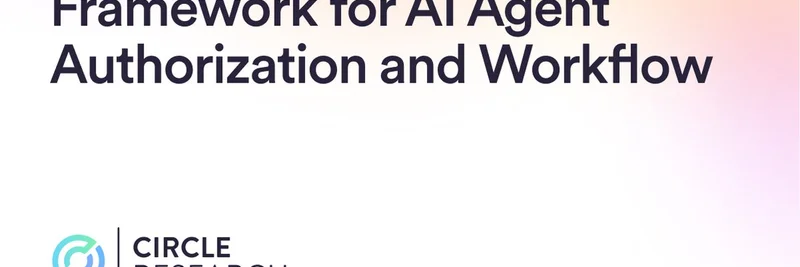Circle, the company behind the popular stablecoin USDC, just dropped some exciting news via their research arm. In a recent tweet, they announced a new framework aimed at making AI agents safer and more reliable when handling blockchain tasks. If you're into meme tokens or any kind of crypto trading, this could be a game-changer for how we build and use automated tools.
The tweet from @circle highlights their latest research: "Building Secure AI Tools for Blockchain." It points out key benefits like preventing those pesky "hallucinated" token transfers—think of it as AI making up fake transactions that could lead to real losses. The framework also adds automated permission checks to agent tools and supports multi-step workflows, which is perfect for complex operations in the crypto space.
For context, AI agents are like smart bots powered by large language models (LLMs) that can perform actions on your behalf, such as sending tokens or interacting with smart contracts. But without proper safeguards, they might mix up chains or send funds to the wrong address. Circle's approach tackles this head-on by baking security into the design, rather than just hoping prompts will do the trick.
Diving deeper into the blog post, Circle introduces the @secure_tool decorator as an extension for the OpenAI Agents SDK. This nifty tool automates user approvals for actions, ensuring everything aligns with what you actually want. It's built on their Object-Oriented Agent Kit (OOAK), which helps structure agent interactions in a more organized way.
Key Components of the Framework
Here's a breakdown of how it works:
@secure_tool Decorator: This wraps your functions with hooks that check permissions before anything runs and report back after. It's like having a bouncer at the door for every tool the AI uses.
WorkflowManager Class: This manages sequences of actions, called "intents." The AI builds a workflow, gets your approval via a function tool, and then executes steps one by one—only moving forward if each one succeeds.
For example, imagine an AI agent handling a meme token trade: It might first approve a USDC transfer, verify it went through, and then swap for your favorite dog-themed coin. The intents are JSON objects that specify exactly what's happening, like the sender, receiver, and amount.
Circle even provides code snippets to get started. Here's a simple example for sending USDC:
python
@secure_tool
def send_usdc(ctxt: RunContextWrapper[WorkflowManager], wfid: str, sender: str, receiver: str, amount: int):
return wallet.send_usdc(sender, receiver, amount)
You can then set up an agent and run it with the WorkflowManager to handle user prompts securely.
Why This Matters for Meme Tokens
In the wild world of meme tokens, where volatility is king and bots are everywhere, security is crucial. Hallucinated transfers could wipe out gains from a viral pump, or worse, expose wallets to risks. This framework could empower developers to create AI-driven trading bots or portfolio managers that handle USDC and other assets without constant manual oversight. Think automated airdrop claims, liquidity provision, or even sentiment-based trades—all with built-in checks to keep things safe.
Plus, since it's open-source, anyone can tinker with it on GitHub. Circle emphasizes that this is experimental, but it's a step toward more robust AI in blockchain, sparking discussions on permissions, access control, and multi-agent systems.
If you're building in the meme space or just curious about where AI meets crypto, check out the original tweet and dive into the repo. It's tools like these that could make decentralized finance more accessible and less error-prone for everyone. What do you think—ready to let AI handle your next meme trade?


